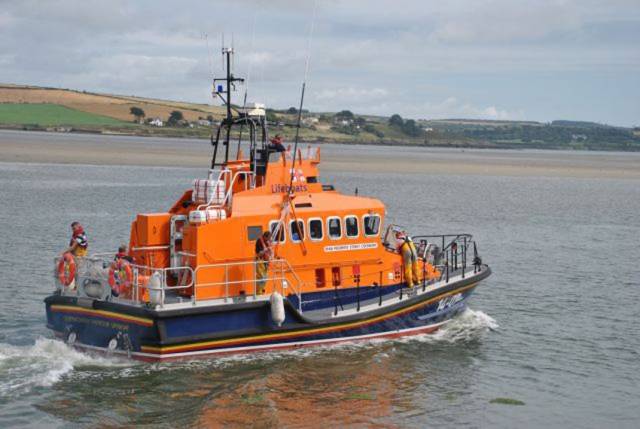#RNLI - RNLI lifeboats from Wicklow and Courtmacsherry have responded to two separate calls from fishing boats in difficulty around the Irish coast in recent days.
A trawler with three fishermen onboard was towed to safety by Wicklow RNLI yesterday morning (Thursday 10 November) after it lost all power 10 miles offshore.
The all-weather lifeboat, under the command of coxswain Nick Keogh and a volunteer crew, launched shortly after 10am and were alongside the stricken fishing vessel 40 minutes later.
The skipper had dropped an anchor, but it had dragged and the vessel had drifted a short distance south with the tide. Conditions in the area had a slight sea state, with northwesterly winds of Force 2-3 and good visibility.
The Naval Service patrol vessel LÉ Orla and the work vessel Wildcat 2 also stood by the trawler as the lifeboat crew established a towline.
The trawler, with three crew on board, was then towed back to Wicklow and brought safely alongside the South Quay at 12.15pm.
The previous evening (Wednesday 9 November), Courtmacsherry RNLI's all-weather lifeboat was called out at 10.15pm to aid a 65ft fishing vessel in difficulty 25 miles south of the Old Head of Kinsale in West Cork.
The lifeboat, under coxswain Sean O'Farrell and a crew of six, launched immediately and located the casualty at 11.25pm. Conditions at sea were reasonable, with winds in the area blowing 26 knots.
The fishing boat, with three people on board had encountered trouble with its power while trawling in the area and required assistance.
On scene, the lifeboat quickly assessed the difficulties and for the next two hours, the lifeboat and stricken vessel proceeded back at low speed to Kinsale, where the boat was safely berthed at 1.45am.
The crew on board Wednesday night’s callout with O'Farrell were mechanic Stewart Russell, Ken Cashman, Donal Young, Ciaran Hurley, Denis Murphy and Conor Tyndall.
































































